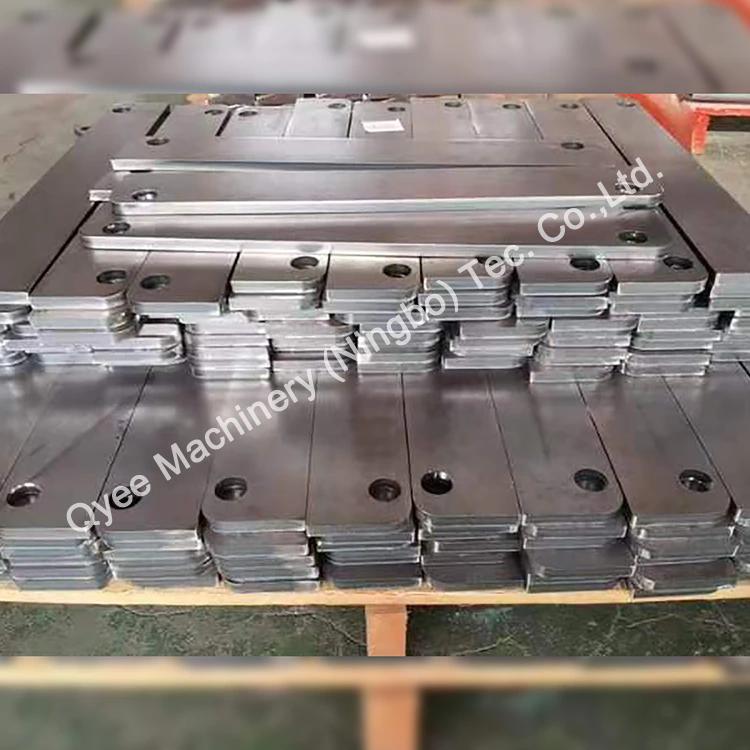What Makes Sheet Metal a Smart Choice for Modern Manufacturing?
2025-11-17
Sheet metal refers to metal materials processed into thin, flat pieces through cutting, bending, stamping, or forming. It is widely used across industries such as automotive, construction, appliances, electronics, aerospace, medical equipment, and industrial machinery. This material has become one of the most versatile components in modern manufacturing due to its strength, formability, cost efficiency, and long-term durability. Understanding what sheet metal is, why it performs so reliably, and how it supports future technological growth helps businesses make informed decisions when selecting materials for production.
What Advantages Define High-Quality Sheet Metal?
Sheet metal is favored worldwide because it offers a range of performance strengths that support both simple and complex engineering needs. Its advantages are tied to its structural behavior, mechanical properties, adaptability during fabrication, and its compatibility with mass production.
Why Does Sheet Metal Offer Such Strong Versatility?
This material is available in many metal types—such as steel, stainless steel, aluminum, brass, copper, and galvanized alloys—each offering different benefits. The ability to customize thickness, surface finish, strength, and protective coatings allows engineers to match specific application requirements precisely.
How Does Sheet Metal Support Both Light and Heavy-Duty Applications?
Sheet metal can be produced in thin gauges for lightweight components or thicker grades for high-load structures. This allows manufacturers to reduce weight where needed while maintaining structural stability in critical areas. The high strength-to-weight ratio makes sheet metal a dependable solution for industries where both durability and efficiency matter.
Professional Product Parameters of Sheet Metal
| Parameter Type | Details |
|---|---|
| Material Options | Carbon steel, stainless steel (304/316), aluminum (5052/6061), galvanized steel, copper, brass |
| Thickness Range | Typically 0.2 mm – 12 mm depending on grade and application |
| Yield Strength | Approx. 120–550 MPa depending on alloy type |
| Tensile Strength | Approx. 150–650 MPa depending on selected metal |
| Surface Treatment | Powder coating, anodizing, polishing, galvanizing, brushing, plating |
| Fabrication Methods | Cutting, stamping, bending, laser cutting, deep drawing, welding, punching |
| Tolerance Levels | ±0.1 mm to ±0.5 mm depending on process |
| Common Applications | Enclosures, brackets, frames, automotive panels, machine guards, structural parts, HVAC components |
These parameters illustrate the professional technical framework that guides selection of sheet metal for different projects. Whether for high-precision electronics or large-scale industrial equipment, sheet metal is engineered to meet strict performance standards.
Why Does Sheet Metal Provide Strong Functional Value Across Industries?
The functionality of sheet metal is essential for product performance. Its flexibility during shaping processes allows complex geometries while maintaining strength and integrity.
What Functional Roles Does Sheet Metal Fulfill?
-
Structural Support
Sheet metal provides layouts for frames, enclosures, support systems, and protective housings. -
Thermal and Electrical Performance
Metals such as aluminum and copper offer excellent conductivity, enabling efficient heat dissipation and stable electrical pathways. -
Corrosion Resistance
When produced from stainless steel, galvanized steel, or aluminum, sheet metal provides long-term rust protection. -
Protective Components
Industrial machinery, consumer appliances, and automotive parts rely on sheet metal to maintain safety, stability, and operational reliability.
How Does Sheet Metal Improve Production Efficiency?
Its ability to be cut, bent, and formed rapidly makes it suitable for mass production. Automated systems such as CNC laser cutting and robotic bending streamline production and ensure repeatable accuracy. This reduces cost and improves consistency.
How Will Sheet Metal Evolve With Future Manufacturing Trends?
As industries shift toward automation, lightweight designs, and energy efficiency, sheet metal continues to adapt through new technologies.
Why Is Sheet Metal Essential to Future Technology?
-
Advances in CNC Technology:
Faster, more precise cutting and forming systems increase accuracy and reduce waste. -
Growth in Sustainable Manufacturing:
Sheet metal is recyclable and supports energy-efficient engineering goals. -
Development of Lightweight Alloys:
Aluminum and advanced composite metals fuel the growing need for lightweight transportation solutions. -
Smart Fabrication Integration:
Sensors, embedded chips, and integrated circuitry expand the role of sheet metal beyond structural use.
How Will Automation Enhance Sheet Metal Production?
More industries are using AI-assisted robots, digital modeling, and high-precision machinery to reduce labor intensity and achieve extremely tight tolerances. Automated bending, punching, and welding reduce human error and shorten lead times, supporting global manufacturing demands.
Common FAQs About Sheet Metal
Q1: What factors determine the durability of sheet metal?
A1: Durability is determined by metal type, thickness, surface treatment, and environmental exposure. Stainless steel provides strong corrosion resistance, aluminum offers lightweight performance with oxidation protection, and galvanized steel includes a zinc layer that prevents rust. Proper coatings such as powder coating or anodizing further extend its lifespan.
Q2: How can sheet metal be customized for specific industrial needs?
A2: Customization is achieved through selecting the right alloy type, thickness, and fabrication method. Laser cutting allows complex geometries, bending provides specific angles, punching adds functional openings, and welding ensures structural strength. Surface finishing options like polishing or coating help achieve visual, protective, or functional goals.
Conclusion: How Does Sheet Metal Continue Providing Long-Term Value?
Sheet metal remains one of the most trusted materials in global manufacturing due to its strength, flexibility, precision, and adaptability. Its ability to perform in structural, electrical, mechanical, and protective applications makes it essential across industries. The evolution of smarter fabrication technology, lightweight alloy development, and increased efficiency ensures that sheet metal will continue to support high-performance products in the future.
As manufacturing demands rise, selecting dependable sheet metal solutions becomes increasingly important. Qyee continues providing high-quality sheet metal products with consistent performance, precise processing, and reliable supply support.
For professional consultation, product inquiries, or customized sheet metal requirements, contact us to receive detailed assistance and tailored solutions.



